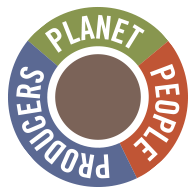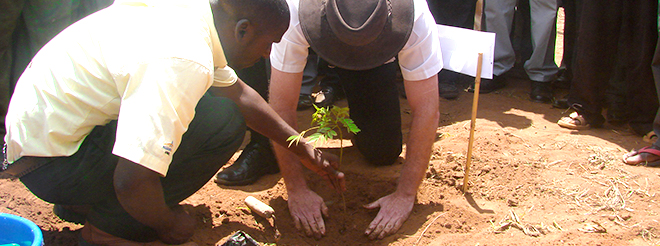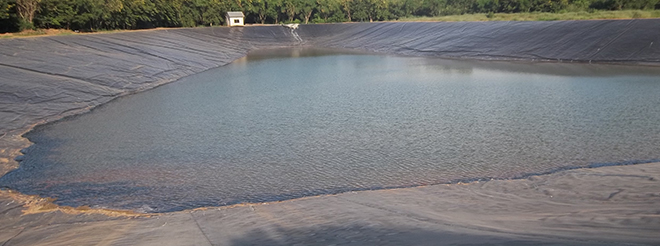 Alliance One is focused on harmonizing the activities across our supply chain with the environment. As an agricultural company, we are dependent on maintaining an environment that is suitable for the efficient production of tobacco. We must tackle critical issues such as climate change, deforestation and water supply in order to secure our leaf supply.
Alliance One is focused on harmonizing the activities across our supply chain with the environment. As an agricultural company, we are dependent on maintaining an environment that is suitable for the efficient production of tobacco. We must tackle critical issues such as climate change, deforestation and water supply in order to secure our leaf supply.
Alliance One’s climate change risk management strategy is based on long-term risk assessments, reducing energy consumption and greenhouse gas (GHG) emissions, and customer requirements. Analyzing and developing plans to respond to long-term climate change risks are ongoing processes, which vary according to the climate in various regions of the world. Professionally trained agronomists and field technicians work closely with growers to adapt growing practices to local conditions, including changing precipitation patterns and temperatures. This can include growing varieties that are more resistant to drought, appropriately using crop protection agents or changing irrigation levels in fields. Long-term changes in precipitation patterns and local climates may necessitate decisions at the corporate level for migration of crop production to other growing areas that are more suitable.
 Each origin is required to report annual metrics related to energy consumption and GHG emissions, as well as implement action plans for each of their sites. These reports allow us to continually identify opportunities for improvement. Alliance One has reported our greenhouse gas emissions since 2009 through CDP and is a leader in providing transparent, independently audited greenhouse gas emission data with a continuous improvement approach toward advancing the accuracy and completeness of our reports.
Each origin is required to report annual metrics related to energy consumption and GHG emissions, as well as implement action plans for each of their sites. These reports allow us to continually identify opportunities for improvement. Alliance One has reported our greenhouse gas emissions since 2009 through CDP and is a leader in providing transparent, independently audited greenhouse gas emission data with a continuous improvement approach toward advancing the accuracy and completeness of our reports.
On a global level, AOI has made significant progress toward our energy sustainability targets. In fiscal year 2015, we reduced our Scope 1 and Scope 2 carbon emissions by 55 percent compared to the previous year, our use of processing fuel by 29 percent compared to 2010 levels, and our use of electrical energy by 19 percent compared to 2010 levels. In the United States, Alliance One was one of three companies recognized by the North Carolina Department of Environment and Natural Resources recognized for its efforts to reduce electricity use. By using energy efficiency measures, Alliance One was able to reduce its electricity use by 1.8 million kWh/yr and reduce fuel use by 10,000 MMBtu/yr in four of its United States facilities.
Wood is a primary fuel source used in the production of tobacco. When not properly managed, the utilization of wood can cause environmental harm in the areas from where we source tobacco. To mitigate this risk, Alliance One has a three-tiered wood management strategy:
 With the advent of the Integrated Production System (IPS) in 2012, Alliance One Tobacco Malawi began to work closely with growers on reforestation programs. In partnership with customers, we began growing trees on commercial plantations so that we could then deliver wood to our Flue-Cured Virginia (FCV) growers. Beginning with the 2013-2014 crop season, AOTM started delivering firewood to contracted growers, reducing pressure on unsustainable and indigenous wood. Today, AOTM has established forests on its own farms within a 50 km radius of FCV growers (Mpale, Chilanga, Khola, Chikumbutso and Lombwa). We have also established plantations in government forests within a 50 km radius of all our growers (Kaombe, Ngala, Dzalanyama and Viphya). Our plantations provide employment opportunities for more than 1,500 individuals from local communities, providing an additional economic benefit to Malawi.
With the advent of the Integrated Production System (IPS) in 2012, Alliance One Tobacco Malawi began to work closely with growers on reforestation programs. In partnership with customers, we began growing trees on commercial plantations so that we could then deliver wood to our Flue-Cured Virginia (FCV) growers. Beginning with the 2013-2014 crop season, AOTM started delivering firewood to contracted growers, reducing pressure on unsustainable and indigenous wood. Today, AOTM has established forests on its own farms within a 50 km radius of FCV growers (Mpale, Chilanga, Khola, Chikumbutso and Lombwa). We have also established plantations in government forests within a 50 km radius of all our growers (Kaombe, Ngala, Dzalanyama and Viphya). Our plantations provide employment opportunities for more than 1,500 individuals from local communities, providing an additional economic benefit to Malawi.
In 2015, Alliance One was honored to receive a Golden Leaf Award from Tobacco Reporter for its wood resource management strategy and results in Malawi.
Check out more of the work we are doing to support the sustainability of our African origins.
In Indonesia, Palm Oil Kernel Shells (POKS) have proven to be an economically viable and available biomass fuel to replace the use of wood fuel. In conjunction with improving curing barn efficiency improvements, 26 percent of Lombok FCV curing barn furnaces was converted to use POKS during 2013, with a target of 100 percent conversion of AOI contracted growers by 2016. This project alone is estimated to protect 1,000 ha of forest from being cut each year.
Check out more of the work we are doing to support the sustainability of our Asian origins.
In general, tobacco requires a minimal amount of water compared to other crops as the plant actually prefers drier conditions. With the exception of large-scale commercial growers, most tobacco is rain-fed. However, we recognize the importance of working with our suppliers to reduce their own water consumption as the primary source of water in our value chain is from rainfall. Changes in precipitation patterns are recognized as influencers that may require changes in future production locations, varieties or production methods. Each of our operations is implementing measures to reduce the amount of water that they use. We are also working with our growers and their communities to help establish consistent water sources, both for irrigation and drinking. Water is an essential component of sustainable livelihoods as well as social and economic development.
 During the dry season in Tanzania, the Ngerengere River, the main source of water for Alliance One’s factory, is almost dry. Over the past four years, Alliance One Tobacco Tanzania decided to take advantage of the long rainy season between March and June. The Company invested in two dams that allow the company to harvest rainwater and use it for tobacco processing. The main source of water for the dams is collected from the factory roof, which covers 48,750m2. Together, the two dams provide water storage capacity of 42 million liters, which is enough to run the factory for more than 4 months in times of inadequate supply. As a result of water re-use and efficiency projects, Alliance One Tobacco Tanzania’s factory has reduced its purchased water consumption by 60% since 2010.
During the dry season in Tanzania, the Ngerengere River, the main source of water for Alliance One’s factory, is almost dry. Over the past four years, Alliance One Tobacco Tanzania decided to take advantage of the long rainy season between March and June. The Company invested in two dams that allow the company to harvest rainwater and use it for tobacco processing. The main source of water for the dams is collected from the factory roof, which covers 48,750m2. Together, the two dams provide water storage capacity of 42 million liters, which is enough to run the factory for more than 4 months in times of inadequate supply. As a result of water re-use and efficiency projects, Alliance One Tobacco Tanzania’s factory has reduced its purchased water consumption by 60% since 2010.
Check out more of the work we are doing to support the sustainability of our African origins.
Factory efficiency improvements to reduce waste, as well as a focus on recycling and reuse of any waste generated has resulted in a global 45% reduction from our FY14 base year. A high percentage of factory waste generated is in the form of tobacco dust or stems that are collected and distributed back to farms as a valuable fertilizer. Where coal is used for factory boiler fuel, ash is collected and used for manufacturing of cement or bricks. Cardboard, metal, glass and plastic are recycled where facilities are available.

Since April 2011, Alliance One Macedonia has recycled more than 62,300 kilograms of paper, 15,000 kilograms of plastic and 278,000 kilograms of scrap metal. We have prevented more than 1,300 kilograms of waste oil and 500 kilograms of other hazardous materials from ending up in the landfill, and we have collected and sent for recycling more than 220 kilograms of e-waste, and 19 kilograms of used batteries.
In addition to the changes implemented at the office, Alliance One Macedonia expanded the waste management program down the supply chain to our contracted tobacco growers. Throughout April and May 2015, the company’s field experts, with the help of the growers, facilitated the collection of 6,000 kg of plastic covers that were generated from seedbeds and oriental curing tents.